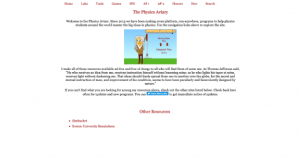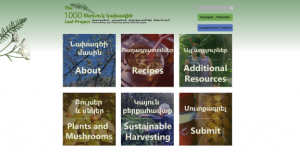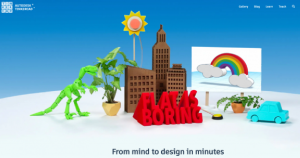Theme: Native American Heritage Month
Back to Top
|
 |
|
Plateau Peoples' Web Portal
|
Social studies |
|
Readers interested in Native American cultures, particularly tribes in the Pacific Northwest, should pay the Plateau People's Web Portal a visit. This project is a collaboration between eight different tribes, including the Schitsu'umsh (Coeur d'Alene), the Umatilla, and the Yakama. Here, readers will find "a gateway to Plateau peoples' cultural materials held in multiple repositories," such as the Northwest Museum of Art and Culture and the Smithsonian Institution's National Museum of the American Indian. What makes this project unique is that the digital materials visitors will find here are curated, annotated, and managed by tribal representatives in accordance with each tribes' specific cultural protocols. This rich, multifaceted collection contains hundreds of images as well as historical documents and audio and video recordings. Visitors can Browse these materials by tribe, category, or collection, and they can also filter the results by multiple fields. The Plateau People's Web Portal is built on the Mukurtu platform (see the 4-26-2019 Scout Report) and is supported by the National Endowment for the Humanities and the American Council for Learned Societies, among others. [JDC] |
|





|
|
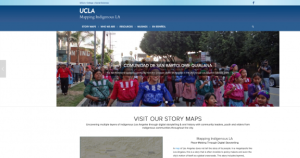 |
|
Mapping Indigenous LA
|
Social studies |
|
With LA's rich diversity at its core, the Mapping Indigenous Los Angeles project from the University of California Los Angeles is creating a series of story maps that bring together a variety of stakeholders to help highlight "multiple layers" of diversity and identity. At the heart of the site are the story maps themselves, which unfold to reveal the complex history of place and the Indigenous peoples who have helped shape and been shaped by them. The story maps vary in length and depth, but all feature a variety of text, photos, podcasts, and other materials that help viewers immerse themselves in the subject matter and deepen their understanding. Accompanying materials include curriculum and educational resources related to telling Indigenous stories approved for both primary and secondary students. The site also features a Further Reading bibliography (accessible under Resources) for those interested in exploring the literature base. Continuing to build and expand the site, Mapping Indigenous LA's research team plans to "include more original inhabitants of Southern California and relocated American Indians, the Latin American Indigenous diaspora, and Pacific Islander communities, who have made Los Angeles their home." [REB] |
|





|
|
 |
|
The Spirit Panel Project
|
Social studies |
|
This collaborative project created by the Canadian Museum for Human Rights and the National Association of Friendship Centres provides a medium of expression for Canadian Indigenous youth as they share their vision of human rights. The museum's primary mission is to explore the subject of human rights, with a particular focus on Canada. As the world's first museum dedicated to the subject, the Canadian Museum for Human Rights is the perfect home for this set of 13 spirit panels created by Elders in collaboration with artists and First Nations, Metis, and Inuit youth. Through a series of sharing circles, Elders encouraged dialogue with the youth to elicit their thoughts and ideas about human rights. Youths engaged in hands-on activities with artists to explore visual metaphors and creative interpretations, which were used by those artists to create the spirt panels. Each panel entry on the website (accessible under Explore) includes images of the artwork (users can zoom in to see more detail), photos of the individuals involved in creating that panel, and video clips that explore what human rights mean to the participants. Jordan Molaro, an Aboriginal filmmaker, documented the project and created the videos from each community. The website is also available in French. [REB] |
|





|
|
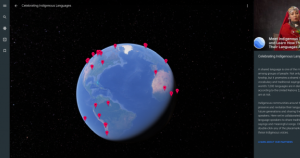 |
|
Celebrating Indigenous Languages
|
Language Arts |
|
There are approximately 7,000 languages spoken around the globe, and more than 4,000 of them are part of Indigenous cultures. According to the United Nations, 2,680 of those Indigenous languages are at risk of disappearing. Readers who would like to hear some of these languages may enjoy Celebrating Indigenous Languages, a new interactive project from Google Earth. Launched in August 2019, this project features audio recordings of more than 50 different Indigenous languages from around the world. For each language, visitors can listen to a traditional greeting and two other examples of the language (e.g. common phrases or songs). For instance, Lori Laiwa Thomas in California shared a traditional song for women dancers and the word for "mother" in the Central Pomo language, while Dr. Solange Pawou Molu from Cameroon shared her favorite proverb and a lullaby in Bamum, her native language. In addition to the recordings, each language also includes a photo of the speaker and a short paragraph about the language. Users can browse through the languages by choosing a pin on the globe or using the arrows in the sidebar. Celebrating Indigenous Languages can be explored online and also downloaded as a Google Earth KMZ file. Users will have the best results with a Google Chrome browser. [JDC] |
|





|
|
 |
|
Return, Reconcile, Renew
|
Social studies |
|
Numerous museums and collections contain artifacts, cultural objects, and human remains that were taken from Indigenous peoples without their consent. Repatriation efforts to return these culturally important objects and remains to their communities have only relatively recently begun gaining traction among the general public. Return, Reconcile, Renew (RRR) is one such effort whose website and digital archive, which launched in September 2019, aim "to increase understanding about repatriation and to help those who wish to locate their Ancestors' remains and bring them home." Based in Melbourne, this resource focuses primarily on the Indigenous peoples of Australia, such as the Ngarrindjeri, the Torres Strait Islanders, and the Aboriginal groups of the Kimberley region. A good place for visitors to start is by exploring the Archive, where they will find a wealth of information organized into categories such as Digital Objects, Indigenous Peoples, Explainers, and Published Resources. The RRR website is the latest development of the international project by the same name that began in 2013, whose partner organizations include research institutions in Australia, New Zealand, and the United States, as well as community organizations led by Indigenous groups in Australia. [JDC] |
|





|
|



